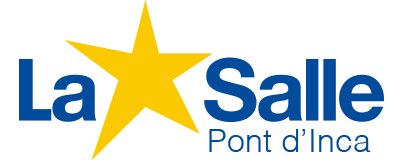Museo de Historia Natural "La Salle-Son Rapinya", Centro "La Salle", Pont d'Inca
-
Code
CLS-SAFA -
Registration date
24/08/2007 -
Update date
12/04/2012 - Download the sheet
Description
The collections of this Museum began in the first years of the XX century with the Herbarium of the Brother Bianor, eminent botanists, and a first collection of minerals of Majorca. Between 1950 and 1975 the Brother Emilio Castro took charge of the Museum; in this period, a lot of fossil remains of herbivore vertebrates found in the island of Majorca were incorporated to the collecions of the Museum. Between 1975 and 1986, the Brother León was the person (organizer also of the La Salle Museum from Paternal) who reordered the collections of the Museum in their current location. After his death that happened in 1986, the Brother Emilio Castro was again who succeeded him in the curation, aided by the Brother Miguel García, professor of Sciences of the School. As in the other schools of the Order, collections of insects, birds, shells, fossils, plants and minerals are exhibited. They are prominent, apart from the Herbarium of the Brother Bianor, a herbivore skeleton (Myotragus balearicus) found in Pollensa (Majorca), and several specimens of Rana pueyoi.Overall information
Goals
The main objective of these museums is the knowledge of Natural History by children.
Usage restrictions
Scholar groups must come with teachers. Must not play and/or run in the museums.
Access restrictions
Appointment is required
Taxonomic coverage
Scientific names
algunos/as Amphibia, algunos/as Aves, algunos/as Coniferophyta, algunos/as Insecta, Liliatae, algunos/as Magnoliatae, algunos/as Mammalia, algunos/as Mollusca, algunos/as Pteridophyta, algunos/as Reptilia.
Common names
algunos/as anfibios, algunos/as Angiospermas, algunos/as artrópodos, algunos/as aves, algunos/as coníferas, algunos/as helechos, algunos/as insectos, algunos/as mamíferos, algunos/as moluscos, algunos/as plantas vasculares, algunos/as reptiles.
Geospatial coverage
principalmente Islas Baleares, algunos/as resto de la Península Ibérica.
Temporal location
Temporal coverage
algunos/as Cenozoico, algunos/as Mesozoico, algunos/as Paleozoico, principalmente reciente.
Datasets of the collection/database
Types of objects
algunos/as conchas (colección), algunos/as huesos, algunos/as huevos, algunos/as organismos enteros, algunos/as pieles.
Types of datasets
algunos/as fósil, principalmente Preservados.
Conservation method
algunos/as alcohol, algunos/as montado, algunos/as pinchado, algunos/as secado y prensado, algunos/as sin tratamiento.
Digitalization
30.000
100
No

